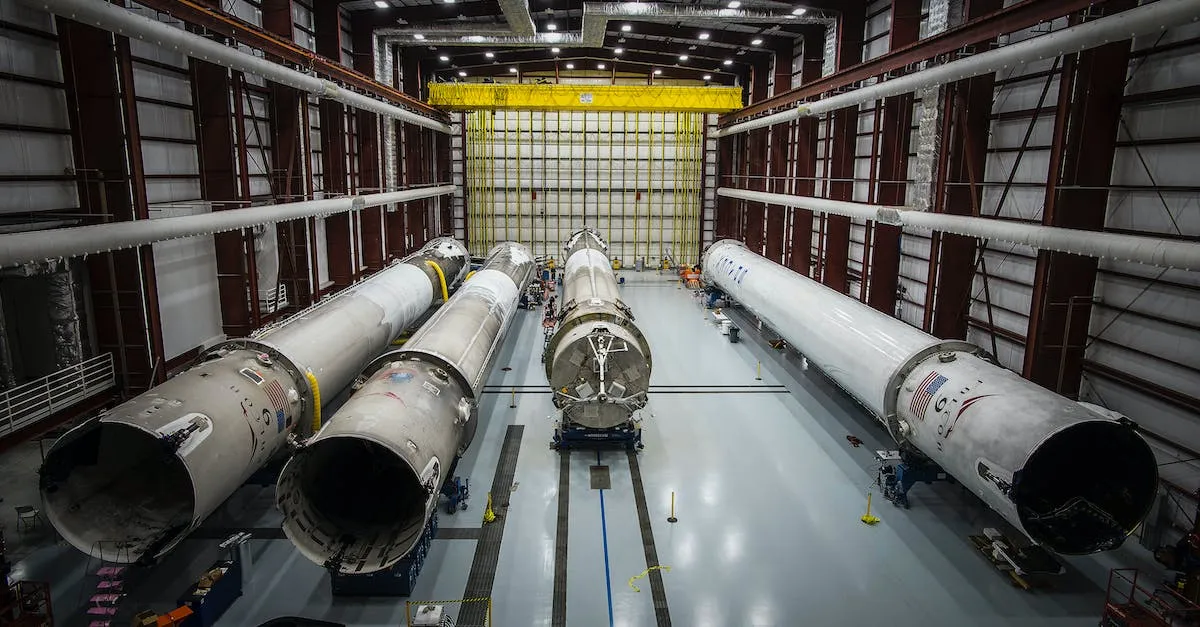Is Aerospace Engineering Rocket Science? Examining The Complexities And Misconceptions
Aerospace engineering is often colloquially referred to as ‘rocket science’ – but does the reality of this field live up to the difficult connotations of that term? While rockets are a component, there are misconceptions about the scope and complexity of aerospace engineering.
If you’re short on time, here’s a quick take: Aerospace engineering does involve challenging rocket propulsion concepts, but also encompasses a wide range of complex systems and disciplines beyond just rockets.
The field requires deep knowledge of physics, math, materials science, dynamics, and more.
In this comprehensive 3000 word guide, we’ll examine what ‘rocket science’ refers to, unpack common misconceptions about aerospace engineering, and analyze the various complex factors that make this a demanding and multi-faceted field.
What Does ‘Rocket Science’ Imply?
When someone says that something is “rocket science,” they are referring to a task or field that is exceptionally challenging, complex, and requires a high level of expertise. The phrase has become a popular idiom to describe any endeavor that seems difficult or beyond the comprehension of the average person.
However, it is important to understand that aerospace engineering, while indeed complex, goes far beyond just rocket science.
Highly Challenging and Complex
Aerospace engineering is undoubtedly a highly challenging and complex field. It involves the design, development, and construction of aircraft, spacecraft, satellites, and missiles. Engineers in this field are responsible for solving intricate problems related to aerodynamics, propulsion systems, materials science, control systems, and much more.
The level of mathematical and scientific knowledge required is extensive, with a significant emphasis on physics, mathematics, and computer science.
For instance, designing an aircraft involves considering factors such as lift, drag, weight distribution, and stability, while also accounting for safety and efficiency. These calculations require a deep understanding of fluid dynamics, structural mechanics, and thermodynamics.
Similarly, designing a rocket or a satellite involves overcoming challenges such as escape velocity, atmospheric reentry, and orbital mechanics.
Requires Advanced Knowledge
Aerospace engineering demands advanced knowledge in various scientific disciplines. Engineers in this field need to be well-versed in physics, mathematics, materials science, computer science, and electrical engineering.
They must have a strong grasp of calculus, differential equations, linear algebra, and numerical analysis to solve complex problems and develop innovative solutions.
Additionally, aerospace engineers must stay up to date with the latest advancements in technology, materials, and manufacturing processes. They need to have a deep understanding of how different materials behave under extreme conditions and be able to utilize the most suitable materials for specific applications.
This knowledge is crucial in ensuring the safety, reliability, and efficiency of aerospace systems.
Specialized Intelligence
Aerospace engineers possess specialized intelligence that enables them to tackle the unique challenges of their field. They have a knack for problem-solving, critical thinking, and innovation. They must be able to analyze complex data, interpret it accurately, and draw meaningful conclusions.
Moreover, aerospace engineers must possess strong communication and teamwork skills. They often work in multidisciplinary teams, collaborating with experts from various fields to develop cutting-edge technologies and overcome complex engineering challenges.
The ability to effectively communicate ideas, work collaboratively, and adapt to changing circumstances is essential in this field.
Rocket Propulsion Principles
Laws of Physics
Rocket propulsion relies on fundamental laws of physics to achieve liftoff and propel spacecraft into space. One of the most important principles is Newton’s Third Law of Motion, which states that for every action, there is an equal and opposite reaction.
In the context of rocketry, this means that as hot gases are expelled from the rocket’s engines at high speeds, the rocket experiences a force in the opposite direction, propelling it forward. This principle is what allows rockets to overcome the force of gravity and travel through the atmosphere and into space.
Another key law of physics involved in rocket propulsion is the law of conservation of momentum. According to this law, the total momentum of a system of objects remains constant unless acted upon by an external force.
In the case of a rocket, this means that the expelled gases create a forward momentum that must be balanced by the rocket’s mass and velocity.
Propulsion Systems
Rocket propulsion systems are designed to generate the necessary thrust to overcome gravity and propel the rocket into space. There are various types of propulsion systems used in aerospace engineering, including solid rocket motors, liquid rocket engines, and hybrid rocket engines.
Solid rocket motors consist of a solid propellant that is ignited to produce thrust. These motors are relatively simple and reliable, making them suitable for use in applications such as booster rockets.
Liquid rocket engines, on the other hand, use liquid propellants that are combined and ignited in a combustion chamber to generate thrust. These engines offer greater control and flexibility in terms of thrust modulation, making them ideal for use in spacecraft maneuvering and orbital insertion.
Hybrid rocket engines combine elements of both solid and liquid propulsion systems. They use a solid fuel grain and a liquid oxidizer, which are combined in the combustion chamber to produce thrust. Hybrid rocket engines offer advantages such as increased safety and simplicity compared to traditional liquid engines.
Fuel Mechanics
The choice of rocket fuel is critical to the performance and efficiency of a spacecraft. Rocket fuels typically consist of a fuel and an oxidizer, which react chemically to produce the necessary thrust.
Common rocket fuels include liquid hydrogen, liquid oxygen, and various combinations of hydrocarbons.
The selection of rocket fuel depends on factors such as specific impulse (a measure of the efficiency of the fuel), energy density, availability, and safety considerations. For example, liquid hydrogen offers high specific impulse but requires careful handling due to its low boiling point and flammability.
Thermodynamics
Thermodynamics plays a crucial role in understanding and optimizing rocket propulsion systems. The field of thermodynamics deals with the transfer of heat and energy between systems.
In the context of rocket propulsion, thermodynamics is used to study the efficiency of rocket engines, the performance of propellants, and the thermal properties of materials used in rocket construction.
Understanding thermodynamic principles helps engineers design propulsion systems that maximize performance and minimize waste heat.
Thermodynamic calculations are used to determine parameters such as specific impulse, exhaust velocity, and thrust-to-weight ratio, which are essential for evaluating the performance of rocket engines.
For more detailed information on rocket propulsion principles, you can refer to reputable sources such as NASA’s website (www.nasa.gov) or the American Institute of Aeronautics and Astronautics (www.aiaa.org).
Aerospace Engineering Beyond Rockets
When most people think of aerospace engineering, they immediately envision rockets soaring into space. While rockets are indeed a significant part of the field, aerospace engineering encompasses much more than that.
Let’s take a closer look at some of the other fascinating aspects of aerospace engineering.
Aircraft and Spacecraft Design
Aerospace engineers are responsible for designing and developing both aircraft and spacecraft. Whether it’s a commercial airliner or a cutting-edge satellite, engineers in this field work on creating the most efficient and technologically advanced vehicles.
They consider factors such as aerodynamics, structural integrity, fuel efficiency, and even passenger comfort. The goal is to design vehicles that can safely navigate the skies or outer space while meeting various performance criteria.
Aerodynamics
Aerodynamics is a crucial aspect of aerospace engineering. It involves the study of how air interacts with moving objects, such as airplanes or rockets. Engineers use advanced computational tools and wind tunnels to analyze and optimize the shape of these vehicles to reduce drag and increase efficiency.
By understanding the complex forces acting on an object in motion, aerospace engineers can design vehicles that can travel faster and more smoothly through the air or space.
Structures and Materials
The structures and materials used in aerospace engineering must be lightweight, yet incredibly strong and durable. Engineers work with advanced materials such as carbon fibers and composites to design components that can withstand the extreme conditions encountered during flight.
They also consider factors such as fatigue, stress, and vibration to ensure the safety and longevity of the vehicles. Innovations in materials science continue to push the boundaries of what is possible in aerospace engineering.
Avionics and Control Systems
Avionics and control systems are the technological brains behind aerospace vehicles. These systems include everything from flight controls and navigation systems to communication and surveillance equipment.
Aerospace engineers work on developing and integrating these complex systems to ensure the smooth operation and safety of the vehicles. They also play a critical role in developing autonomous technologies for unmanned aerial vehicles and spacecraft.
So, while aerospace engineering is closely associated with rocket science, it goes far beyond just rockets. It encompasses a wide range of disciplines and technologies that contribute to the design, development, and operation of various aircraft and spacecraft.
To learn more about aerospace engineering and its exciting advancements, visit NASA’s website or AIAA (American Institute of Aeronautics and Astronautics).
Advanced Skills and Knowledge Required
Aerospace engineering is a highly specialized field that requires advanced skills and knowledge in various areas. It is not just rocket science, but a combination of several disciplines that come together to design, develop, and maintain aircraft and spacecraft.
Let’s take a closer look at some of the key areas of expertise required in this fascinating field.
Math
Mathematics plays a crucial role in aerospace engineering. From calculus to differential equations, engineers use complex mathematical formulas and equations to analyze and solve problems related to aerodynamics, flight mechanics, and structural design.
Understanding mathematical concepts and being able to apply them accurately is essential for aerospace engineers.
Physics
Physics is another fundamental aspect of aerospace engineering. Engineers need a deep understanding of the laws of physics, including mechanics, electromagnetism, and thermodynamics, to design and analyze aircraft and spacecraft systems.
They use principles of physics to study the behavior of objects in motion, the forces acting upon them, and the transfer of energy in different systems.
Computer Modeling
In today’s digital age, computer modeling has become an integral part of aerospace engineering. Engineers use advanced software and computer simulations to design and test aerospace systems before they are built.
This allows them to identify potential flaws, optimize designs, and improve overall performance. Computer modeling also helps in predicting the behavior of aircraft and spacecraft under various operating conditions.
Mechanics and Thermodynamics
Understanding mechanics and thermodynamics is crucial for aerospace engineers. They need to have a solid grasp of how mechanical systems work, including the principles of motion, forces, and materials.
Additionally, knowledge of thermodynamics helps engineers design efficient propulsion systems and thermal management solutions for aerospace vehicles.
According to the American Institute of Aeronautics and Astronautics (AIAA), aerospace engineering requires a strong foundation in mathematics and physics, as well as proficiency in computer programming and problem-solving skills. So, while it may not be exactly rocket science, aerospace engineering definitely demands a high level of expertise in various technical areas.
Challenging Aspects and Common Misconceptions
Systems Complexity vs Single Focus
Aerospace engineering is often misunderstood as being solely focused on rocket science. While rocket science is indeed a part of aerospace engineering, it is just one aspect of a much broader field. Aerospace engineers are responsible for the design, development, and testing of various types of aircraft, spacecraft, and missiles.
This includes not only rockets but also airplanes, helicopters, satellites, and even unmanned aerial vehicles (UAVs). The complexity of these systems goes beyond just the propulsion systems, involving aerodynamics, materials science, avionics, control systems, and more.
According to a study conducted by the Bureau of Labor Statistics, aerospace engineers spend a significant amount of their time working on systems integration and testing. This involves ensuring that all the different components of an aircraft or spacecraft work together seamlessly and efficiently.
So, while rocket science may be a part of aerospace engineering, it is just one piece of a much larger puzzle.
Breadth vs Depth of Knowledge
Another misconception about aerospace engineering is that it requires a deep understanding of every single aspect of the field. While aerospace engineers do need to have a broad knowledge base, they also have the opportunity to specialize in specific areas.
This allows them to develop expertise in subjects such as aerodynamics, structures, propulsion, or guidance and control systems.
Just like in any other field of engineering, aerospace engineers collaborate with specialists in various disciplines. For example, a team working on the design of an aircraft may include experts in aerodynamics, materials science, electrical engineering, and computer science.
This collaborative approach allows aerospace engineers to leverage the expertise of others while also contributing their own specialized knowledge.
Slow Pace of Learning
Aerospace engineering is not something that can be learned overnight. It requires years of study, practical experience, and continuous learning to become proficient in the field. The complexities of aerospace systems, combined with the ever-evolving technology, mean that aerospace engineers must constantly stay up-to-date with the latest advancements.
According to the American Institute of Aeronautics and Astronautics, aerospace engineers often pursue advanced degrees and engage in lifelong learning to stay competitive in the industry. This commitment to ongoing education allows them to adapt to new technologies, regulations, and industry standards.
So, while aerospace engineering may seem like rocket science at first glance, it is important to recognize the breadth of the field, the depth of knowledge required, and the ongoing commitment to learning that is necessary for success.
Conclusion
While aerospace engineering does encompass the complex rocket propulsion concepts implied by the term ‘rocket science’, the field also requires expertise across a wide range of systems, physics, math, and dynamics.
By examining aspects beyond just rockets as well as recognizing the challenging depth and breadth of knowledge required, we can better appreciate the complexities and problem-solving abilities encompassed in the aerospace engineering field.







